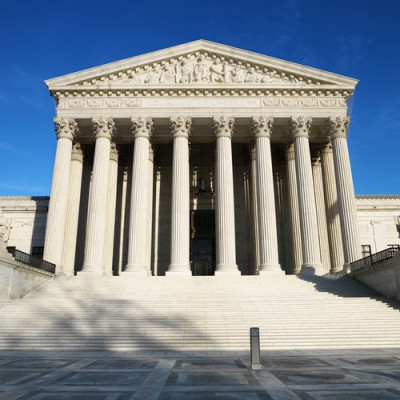Supreme Court rules for inmate whose expert said race could predict violence

The U.S. Supreme Court on Wednesday ruled 6-2 on behalf of a death-row inmate whose own expert witness testified he is statistically more likely to be dangerous in the future because he is black.
Chief Justice John G. Roberts Jr. wrote the majority opinion (PDF) finding that inmate Duane Buck had demonstrated his lawyer was ineffective, entitling him to reopen the judgment and litigate his claim.
Justice Clarence Thomas dissented in an opinion joined by Justice Samuel A. Alito Jr.
Buck had been convicted in the 1995 shooting deaths of his former girlfriend and her friend.
Defendants in Texas at the time of Buck’s trial couldn’t be sentenced to death unless jurors concluded they presented a future danger. Buck’s expert said he was unlikely to be violent in the future, but said during cross-examination that black males were statistically more likely to be dangerous in the future.
Buck’s expert had testified in other cases as well. In one of those cases, Texas confessed error while Buck’s first habeas petition was pending. The state later identified six more similar cases, and confessed error in all but Buck’s case. The state argued that Buck’s case was different because it was the defense, rather than the prosecution, that called the expert as a witness.
Buck’s lawyer did not raise the claim of ineffective assistance in Buck’s first state postconviction proceeding. As a result, a federal judge held in 2006, the claim was procedurally defaulted. Buck sought to reopen the judgment, but a federal appeals court refused to issue a certificate of appealability. To obtain a certificate, the inmate has to make a substantial showing of the denial of a constitutional right.
The New Orleans-based 5th U.S. Circuit Court of Appeals had essentially decided Buck’s case on the merits when it denied the certificate, Roberts wrote in his opinion.The 5th Circuit should have instead decided whether Buck’s claim was debatable, and should have issued the certificate if it was, Roberts said.
Roberts said Buck had demonstrated prejudice. The expert’s testimony “appealed to a powerful racial stereotype—that of black men as ‘violence prone,’ ” Roberts said. Nor was the reference to race de minimis, Roberts said. “Some toxins can be deadly in small doses,” he concluded.
“Buck may have been sentenced to death in part because of his race,” Roberts wrote. “This is a disturbing departure from a basic premise of our criminal justice system: Our law punishes people for what they do, not who they are.”
Thomas began his dissent this way: “Having settled on a desired outcome, the court bulldozes procedural obstacles and misapplies settled law to justify it.”
Hat tip to SCOTUSblog.
Related articles:
ABAJournal.com: “SCOTUS to consider case of death-row inmate whose case was ‘marred by racial overtones’”
ABAJournal.com: “SCOTUS appears likely to rule for inmate whose expert said race could predict violence”
ABA Journal: “SCOTUS considers death penalty case in which expert testified race could predict future violence”



